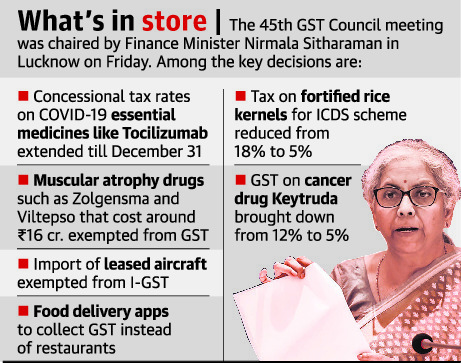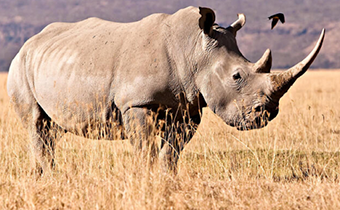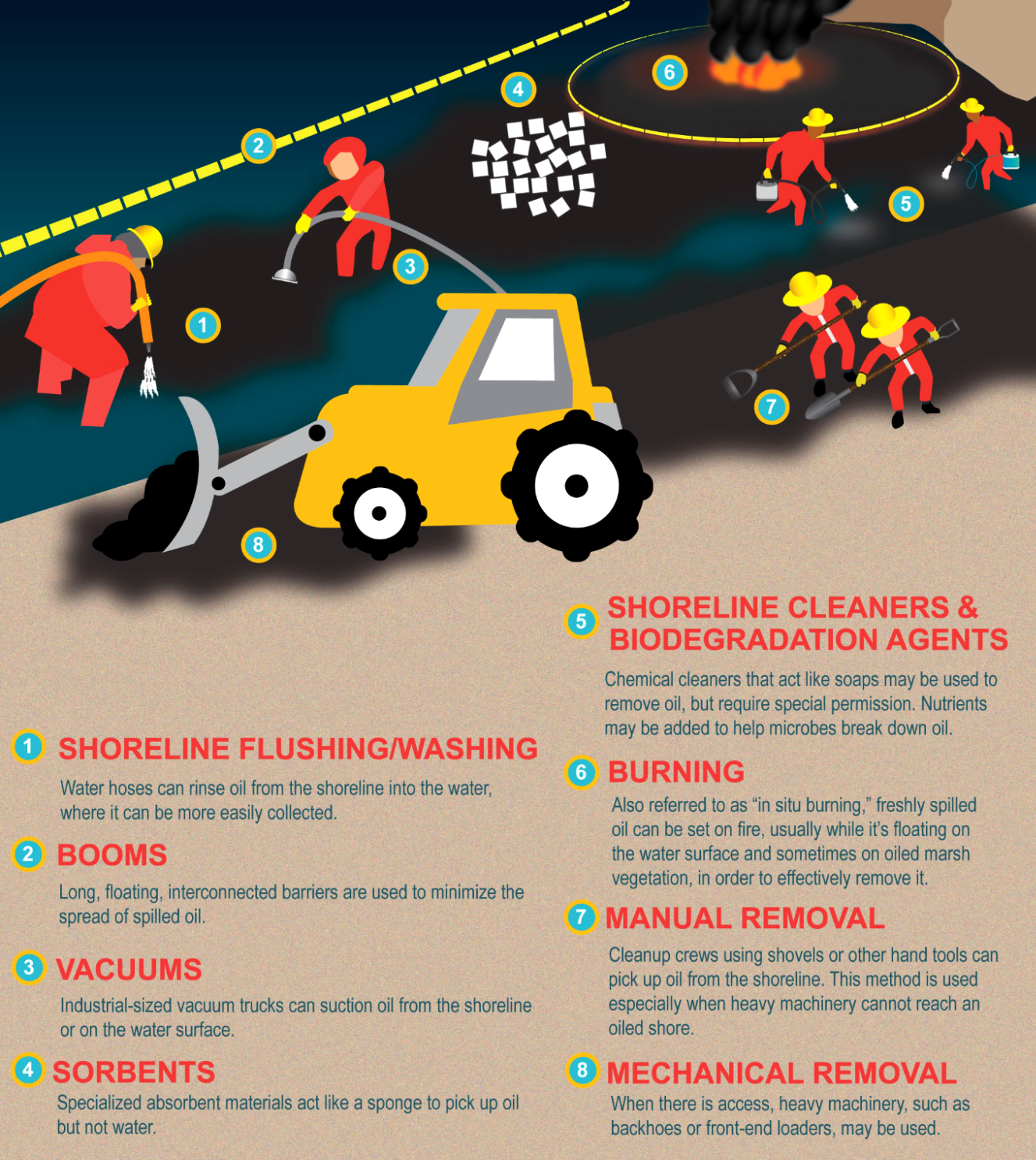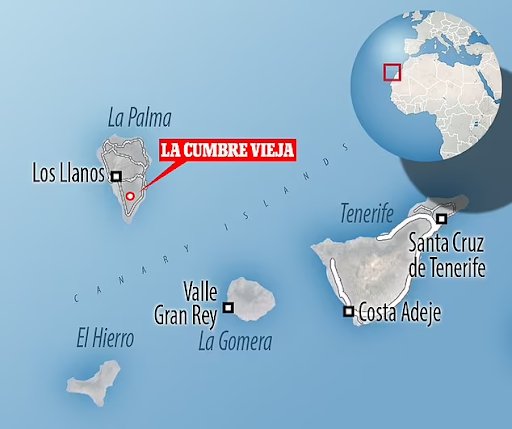Rules for Ammonium Nitrate
Why in News
Recently, the Government has amended the rules for Ammonium Nitrate to curb its pilferage, introduce fire-fighting provisions as well as improve ways to handle and store the chemical.
- These rules have been amended from the lesson learnt from the Beirut Explosion in 2020. Nearly 3,000 tons of ammonium nitrate was stored at Beirut's port for six years that detonated in 2020, wreaking death and destruction.
Key Points
- About New Rules:
- The rules require that ammonium nitrate received at ports be transferred to storage houses 500 metres beyond the port area.
- The rules also permit the auction of seized lots of ammonium nitrate to ensure safe and speedy disposal besides requiring that Ammonium Nitrate be imported in bagged form only.
- The amendments include provision for adequate fire-fighting facilities in storage and handling areas, improvement of flooring in storage and handling areas.
- This will reduce the handling of loose chemicals at port and therefore enhance safety.
- About Ammonium Nitrate:
- Ammonium Nitrate (NH4NO3) is a nitrogen-rich white, crystalline chemical which is soluble in water.
- Uses:
- It is a common chemical ingredient of agricultural fertilisers.
- It is used as an ingredient for the production of anaesthetic gases and cold packs.
- It is also the main ingredient in the manufacture of commercial explosives used in mining and construction.
- As Explosive:
- It is the main component of the explosive composition known as ANFO- Ammonium Nitrate Fuel Oil.
- Pure ammonium nitrate is not an explosive on its own. For Ammonium nitrate to be explosive, a primary explosive or detonator like RDX or TNT is required.
- Many Improvised Explosive Devices (IEDs) used by terrorists around the world have ANFO as the main explosive.
- Stored ammonium nitrate is a fire hazard and can explode in two ways.
- It may come in contact with some explosive mixture.
- Due to the oxidation process at large scale, heat may be generated starting a fire and then explosion. This seems to be the primary likely cause of the incident at Beirut port.
- Regulations:
- Global: It is classified as an oxidising content (Grade 5.1) under the United Nations classification of dangerous goods.
- The United Nations Committee of Experts on the Transport of Dangerous Goods categorizes the types of dangerous goods, under nine classes like Explosive Materials, Inflammable liquids, Easily oxidising contents etc.
- India: In India, the manufacture, conversion, bagging, import, export, transport, possession for sale or use of ammonium nitrate is covered under The Ammonium Nitrate Rules, 2012.
- The Explosives Act, 1884, define ammonium nitrate as the “compound with formula NH4NO3 including any mixture or compound having more than 45% ammonium nitrate by weight including emulsions, suspensions, melts or gels but excluding emulsion or slurry explosives and non explosives emulsion matrix and fertilizers from which the ammonium nitrate cannot be separated”.
- Storage of ammonium nitrate in large quantities in populated areas is illegal in India.
- For the manufacture of ammonium nitrate, an Industrial licence is required under the Industrial Development and Regulation Act, 1951.
- A license under the Ammonium Nitrate Rules, 2012 is also required for any activity related to ammonium nitrate.
- Global: It is classified as an oxidising content (Grade 5.1) under the United Nations classification of dangerous goods.
Aroma Mission & Floriculture Mission
Why in News
Recently, the Union Minister of State Science & Technology has proposed Integrated Aroma Dairy Entrepreneurship for Jammu & Kashmir to augment the income of farmers.
- The Aroma Mission, also popularly referred as "Lavender or Purple Revolution", has started from J&K and transformed the lives of farmers who are able to grow lavender, make lucrative profit and improve their lives.
- Earlier, the floriculture mission was launched in 21 States and Union Territories.
Key Points
- Aroma Mission:
- Objectives:
- To promote the cultivation of aromatic crops for essential oils that are in great demand by the aroma industry.
- To enable Indian farmers and the aroma industry to become global leaders in the production and export of some other essential oils on the pattern of menthol mint.
- To provide substantial benefits to the farmers in achieving higher profits, utilization of waste lands and protection of their crops from wild and grazing animals.
- Nodal Agencies:
- The nodal laboratory is CSIR-Central Institute of Medicinal and Aromatic Plants (CSIR-CIMAP), Lucknow.
- The participating laboratories are CSIR-Institute of Himalayan Bioresource Technology (CSIR-IHBT), Palampur; CSIR-Indian Institute of Integrative Medicine (CSIR-IIIM), Jammu etc.
- Coverage:
- The scientific interventions made under the mission project provided assured benefits to the growers of Vidarbha, Bundelkhand, Gujarat, Marathwada, Rajasthan, Andhra Pradesh, Odisha and other states where farmers are exposed to frequent episodes of weather extremes and account for maximum suicides.
- Aromatic Plants include lavender, damask rose, mushk bala, etc.
- Launch of Second Phase:
- CSIR-IIIM-Jammu announced Aroma Mission phase-II in February, 2021 after the success of the first phase.
- It focuses on setting up of cooperatives for marketing, promotion of cultivation and processing of high value medicinal and aromatic plants (MAPs), development of superior varieties and their agro technologies, setting up of distillation units and processing facilities, skill and entrepreneurship development, value-addition and product development from MAPs.
- Significance:
- Apart from being in sync with government policy of doubling farm incomes by 2022, the missiom also provided employment to the women farmers thus giving impetus to inclusive growth.
- Objectives:
- Floriculture Mission:
- Floriculture:
- It is a branch of horticulture that deals with the cultivation, processing and marketing of ornamental plants vis-à-vis landscaping of small or large areas, and maintenance of gardens so that the surroundings may appear aesthetically pleasant.
- Objectives:
- To focus on commercial floral crops, seasonal/annual crops, wild ornaments and cultivation of flower crops for honey bee rearing.
- Some of the popular crops include Gladiolus, Canna, Carnation, Chrysanthemum, Gerbera, Lilium, Marigold, Rose, Tuberose etc.
- Implementing Agencies:
- Along with Council of Scientific and Industrial Research (CSIR), other implementing agencies involved are:
- Indian Council of Agricultural Research (ICAR)
- Khadi and Village Industries Commission (KVIC)
- APEDA and TRIFED
- Fragrance and Flavour Development Centre (FFDC), Kannauj, and
- Ministry of Commerce and Ministry of Micro, Small and Medium Enterprises (MSME).
- Along with Council of Scientific and Industrial Research (CSIR), other implementing agencies involved are:
- Floriculture Market:
- The Indian Floriculture market was worth INR 157 Billion in 2018. The floriculture market is expected to reach a value of INR 661 Billion by 2026, exhibiting a CAGR (Compound Annual Growth Rate) of 19.2% during 2021-2026.
- Significance:
- Employment generation: Floriculture has the potential to provide employment to a large number of people through nursery raising, floriculture farming, entrepreneurship development for nursery trade, value addition and export.
- Import Substitution: India has diverse agro-climatic and edaphic conditions (physical, chemical, and biological properties of soil), and rich plant diversity, still it shares only 0.6% of the global floriculture market.
- At least 1200 million USD worth of floriculture products are being imported by India every year from different countries.
- Floriculture:
Draft Personal Data Protection Bill, 2019
Why in News
Recently, the Joint Parliamentary Committee (JPC) discussed the Personal Data Protection Bill, 2019 and reopened it for consultations.
- It is expected to submit its report in the Winter Session of Parliament 2021.
Key Points
- About:
- It is commonly referred to as the “Privacy Bill” and intends to protect individual rights by regulating the collection, movement, and processing of data that is personal, or which can identify the individual.
- In December 2019, Parliament approved sending it to the joint committee.
- The Bill gives the government powers to authorise the transfer of certain types of personal data overseas and has given exceptions allowing government agencies to collect personal data of citizens.
- The Bill divides the data into three categories and mandates their storage depending upon the type.
- Personal Data: Data from which an individual can be identified like name, address, etc.
- Sensitive Personal Data: Some types of personal data like financial, health-related, sexual orientation, biometric, genetic, transgender status, caste, religious belief, and more.
- Critical Personal Data: Anything that the government at any time can deem critical, such as military or national security data.
- It removes the requirement of data mirroring (in case of personal data). Only individual consent for data transfer abroad is required.
- Data mirroring is the act of copying data from one location to a storage device in real-time.
- It mandates data fiduciaries to provide the government with any non-personal data when demanded.
- Data Fiduciary: It may be a service provider who collects, stores and uses data in the course of providing such goods and services.
- Non-Personal Data refers to anonymised data, such as traffic patterns or demographic data. In September 2019, the government set up a new committee to recommend a framework to regulate non-personal data.
- The Bill requires companies and social media intermediaries, which are “significant data fiduciaries”, to enable users in India to voluntarily verify their accounts.
- It would be visible in a “demonstrable and visible mark of verification, which shall be visible to all users of the service”.
- This intends to decrease the anonymity of users and prevent trolling.
- A Data Protection Authority has been envisaged for ensuring the compliance of the law.
- It also mentions ‘Right to be Forgotten.’ It states that the “data principal (the person to whom the data is related) shall have the right to restrict or prevent the continuing disclosure of his personal data by a data fiduciary”.
- It is commonly referred to as the “Privacy Bill” and intends to protect individual rights by regulating the collection, movement, and processing of data that is personal, or which can identify the individual.
- Advantages:
- Data localisation can help law-enforcement agencies access data for investigations and enforcement and also increase the ability of the government to tax internet giants.
- Instances of cyber-attacks (for example, Spyware Pegasus) and surveillance can be checked.
- Social media, which is sometimes used to spread fake news, can be monitored and checked, preventing emerging national threats in time.
- A strong data protection legislation will also help to enforce data sovereignty.
- Disadvantages:
- Many contend that the physical location of the data is not relevant in the cyber world as the encryption keys may still be out of reach of national agencies.
- National security or reasonable purposes are open-ended and subjective terms, which may lead to intrusion of the state into the private lives of citizens.
- Technology giants like Facebook and Google are against it and have criticised the protectionist policy of data localisation as they are afraid it would have a domino effect in other countries as well.
- It had been opposed by social media firms, experts and even ministers, who said that it had too many loopholes to be effective and beneficial for both users and companies.
- Also, it may backfire on India’s own young startups that are attempting global growth, or on larger firms that process foreign data in India.
45th GST Council Meeting
Why in News
Recently, the 45th Goods and Services Tax (GST) Council meeting was held.
Key Points
- Extension of Concessional GST Rates:
- The Council decided to extend the GST relief on several drugs related to Covid-19 treatment till December 2021.
- Food Delivery Apps to Collect GST:
- Online food delivery aggregator firms such as Swiggy and Zomato will now be liable to pay GST and not the restaurant partners.
- Currently, online bills generated by food aggregators already have a tax component in it.
- The taxed amount is paid back to the restaurant partners who are then expected to pay this amount to the government.
- Online food delivery aggregator firms such as Swiggy and Zomato will now be liable to pay GST and not the restaurant partners.
- Petrol and Diesel will not come under GST Regime:
- The council has decided not to bring petrol and diesel under the GST regime. States vehemently opposed the inclusion of the fuels while raising concerns on revenue buoyancy during the meet.
- If petrol and diesel come under the GST regime, prices will become mostly uniform across all states as the different excise and VAT rates that the Centre and the states impose would then be done away with.
- This would help bring down diesel and petrol prices greatly, which has touched new highs in the recent past.
- The council has decided not to bring petrol and diesel under the GST regime. States vehemently opposed the inclusion of the fuels while raising concerns on revenue buoyancy during the meet.
- GST on Fortified Rice Reduced:
- The GST rate on fortified rice kernels for schemes like integrated child development schemes has been recommended to be reduced from 18% to 5%.
- GoM to Look After Rate Rationalisation:
- A Group of state ministers (GoM) will be established to look after the rate rationalisation related issues to correct the inverted duty structure and to take steps to augment revenues.
- An inverted duty structure arises when the taxes on output or final product is lower than the taxes on inputs, creating an inverse accumulation of input tax credit which in most cases has to be refunded.
- Inverted duty structure has implied a stream of revenue outflow for the government prompting the government to relook the duty structure.
- Other GoMs will be set up in order to look after issues of e-way bills, FASTAGs, compliances, technology, plugging of loopholes, composition schemes etc.
- A Group of state ministers (GoM) will be established to look after the rate rationalisation related issues to correct the inverted duty structure and to take steps to augment revenues.
GST Council
- It is a constitutional body (Article 279A) for making recommendations to the Union and State Government on issues related to Goods and Services Tax.
- The GST Council is chaired by the Union Finance Minister and other members are the Union State Minister of Revenue or Finance and Ministers in-charge of Finance or Taxation of all the States.
- It is considered as a federal body where both the centre and the states get due representation.
Alternative of Single-use Plastics
Why in News
Recently, the researchers at the Indian Institute of Science, Bengaluru (IISc) have found a way to make a substitute for single-use plastic (SUP) that can, in principle, help mitigate the problem of accumulating plastic waste in the environment.
Key Points
- About the Research:
- In the research, Non-edible Castor oil was used in this process of making the polymer which involves allowing them to react with the cellulose (from agriculture stubble) and di-isocyanate compound.
- These polymers can be moulded into sheets having properties suitable for making bags, cutlery or containers.
- The material so made is biodegradable, leak-proof and non-toxic.
- Possible Advantages:
- Addressing the Problem of Single use Plastics (SUP): Given the surge in the usage of single use plastics and the challenge of managing the landfills choked with SUPs, such alternatives could bring paradigm shift especially in the packaging sector, the largest consumer of SUP.
- Tackling Agricultural Stubble Problem: Agricultural stubble burning is responsible for air pollution in several northern states in India.
- In Delhi, for example, the air quality index dips to indicate “severe” or “hazardous” level of pollution every winter, and this is due in part to the burning of agricultural stubble in the surrounding regions.
- Using agriculture stubble for replacement of single use plastics will not address the problem of air pollution, but will generate additional income opportunities for farmers also.
- Use in Healthcare Facilities: As the material is biodegradable and non-toxic, researchers are planning to use the material for healthcare applications also.
- Other Alternatives to Single-Use Plastics:
- Long-lasting plastic alternatives that are available right now are, Stainless steel, glass, Platinum Silicone, Bamboo, pottery and ceramics, etc.
- Other than these, bioplastics can be used to replace traditional plastics.
- Bioplastics are a type of plastic that can be made from natural resources such as vegetable oils and starches.
- Need to Address Plastic Pollution:
- According to a report by the Central Pollution Control Board of India, for the year 2018-2019, 3.3 million metric tonnes of plastic waste were generated by Indians.
- Moreover, several reports suggest that it is an underestimation.
- Another alarming statistic is that of all the plastic waste produced in the world, 79% enters the environment.
- Only 9% of all plastic waste is recycled.
- Accumulation of plastic waste is detrimental to the environment and when this waste finds its way into the sea, there can be major harm to aquatic ecosystems, too.
- SUP is so cheap and convenient that it has replaced all other materials from the packaging industry but it takes hundreds of years to disintegrate.
- According to a report by the Central Pollution Control Board of India, for the year 2018-2019, 3.3 million metric tonnes of plastic waste were generated by Indians.
Initiatives to Curb Plastic Waste
Way Forward
- Circular Economy: Countries must embrace circular and sustainable economic practices throughout the plastics value chain to reduce plastic pollution.
- A circular economy depends on reuse, sharing, repair, refurbishment, remanufacturing and recycling of resources to create a closed-loop system, minimising the use of resources, generation of waste, pollution and carbon emissions.
- Behavioural Change: Citizens have to bring behavioural change and contribute by not littering and helping in waste segregation and waste management.
- Extended Producer Responsibility: At the policy level, the concept of Extended Producer Responsibility (EPR), already mentioned under the 2016 Rules, has to be promoted.
- EPR is a policy approach under which producers are given a significant responsibility – financial and/or physical – for the treatment or disposal of post-consumer products.
World Rhino Day
Why in News
World Rhino Day is observed on 22th September to spread awareness for all five species of rhino and work being done to save them.
Key Points
- It was first announced by the World Wildlife Fund (WWF) - South Africa in 2010. The species of rhinoceros are on the verge of extinction due to persistent poaching and habitat loss over several decades.
- There are five species of rhino – white and black rhinos in Africa, and the greater one-horned, Javan and Sumatran rhino species in Asia.
- IUCN Red List Status:
- White Rhino: Near Threatened.
- Black Rhino: Critically endangered.
- Greater One Horned: Vulnerable.
- Javan: Critically Endangered
- Sumatran Rhino: Critically Endangered
- IUCN Red List Status:
- Theme 2021: Keep the five Alive.
- Objectives: Strengthening protection, Expanding the distribution range, Research and monitoring, Adequate and sustained funding.
Greater One-Horned Rhinoceros
- About:
- Also known as Indian rhino, it is the largest of the rhino species. It is identified by a single black horn and a grey-brown hide with skin folds. India is home to the largest number of Greater One-Horned Rhinoceros in the world.
- They primarily graze, with a diet consisting almost entirely of grasses as well as leaves, branches of shrubs and trees, fruit, and aquatic plants.
- At present, there are about 2,600 Indian rhinos in India, with more than 90% of the population concentrated in Assam’s Kaziranga National Park.
- Habitat:
- The species is restricted to small habitats in Indo-Nepal terai and northern West Bengal and Assam.
- In India, rhinos are mainly found in Kaziranga NP, Pobitora WLS, Orang NP, Manas NP in Assam, Jaldapara NP and Gorumara NP in West Bengal and Dudhwa TR in Uttar Pradesh.
- Threats:
- Poaching for the horns
- Habitat loss
- Population density
- Decreasing Genetic diversity
- Protection Status:
- IUCN Red List: Vulnerable.
- CITES: Appendix-I
- Wildlife Protection Act, 1972: Schedule I.
- Conservation Efforts by India:
- New Delhi Declaration on Asian Rhinos 201’: India, Bhutan, Nepal, Indonesia and Malaysia have signed a declaration for the conservation and protection of the species.
- DNA profiles of all rhinos: The project will help in curbing poaching and gathering evidence in wildlife crimes involving rhinos.
- National Rhino Conservation Strategy: It was launched in 2019 to conserve the greater one-horned rhinoceros.
- Indian Rhino Vision 2020: It was an ambitious effort to attain a wild population of at least 3,000 greater one-horned rhinos spread over seven protected areas in the Indian state of Assam by the year 2020.
Super-Hydrophobic Cotton Composite for Oil Spills
Why in News
Recently, the Indian Institute of Technology (IIT), Guwahati, has developed a super-hydrophobic cotton composite with Metal-Organic Framework (MOF) that can clean-up marine oil-spill.
- Earlier, a study confirmed that Stimulating Bacteria (Bioremediation) with nutrients in the cold seawaters of the Canadian Arctic can help decompose diesel and Other Petroleum Oil after Oil Spills.
Key Points
- About:
- It is a novel MOF composite, which is a highly porous and water-repellent material and can absorb oil selectively from an oil-water mixture.
- MOF are crystalline porous solids composed of a three-dimensional (3D) network of metal ions held in place by multidentate organic molecules suitable for solid-phase extraction.
- This MOF composite has great capability for selective separation of the oils from oil/water mixtures and the separation efficiency lies between 95% and 98%, irrespective of the chemical composition and density of the oils.
- It can also absorb large volumes of oils and can be reused for a minimum of 10 times so that the sorbents can provide more recovery of the spilled oil. Both heavy and light oils can be effectively absorbed by the material, which is easy to prepare, cost-effective and recyclable.
- It is a novel MOF composite, which is a highly porous and water-repellent material and can absorb oil selectively from an oil-water mixture.
- Significance:
- It will clean-up the spilled oil from environmental water (river, sea or ocean water) during oil transportation with high efficiency and large absorption capacity, thus reducing environmental water pollution.
- It is environmentally friendly and cost effective. Such low-cost material will reduce the production cost of the material for large-scale synthesis for real applications, compared to currently available materials.
- Other Remedies for Oil Spills:
Oil Spills
- About:
- It refers to any uncontrolled release of crude oil, gasoline, fuels, or other oil by-products into the environment. It can pollute land, air, or water, though it is mostly used for oceanic oil spills.
- The severe water contamination threatens the health of humans as well as other living species.
- It has become a major environmental and economic problem, chiefly as a result of intensified petroleum exploration and production on continental shelves and the transport of large amounts of oils in vessels.
- Major oil spills are frequently followed by the immediate suspension of commercial fishing and also affect tourism and commerce through sea routes.
- Oil spills that happen in rivers, bays and the ocean most often are caused by accidents involving tankers, barges, pipelines, refineries, drilling rigs and storage facilities, but also occur from recreational boats and natural disasters.
- Related Laws in India:
- Presently, there is no law covering oil spill as such and its consequential environmental damage in India but India has “the National Oil Spill Disaster Contingency Plan of 1996 (NOS-DCP)” to handle such situations.
- It gives the Indian Coast Guard the mandate to coordinate with state departments, ministries, port authorities and environmental agencies to assist in oil spill cleaning operations.
- In 2015 India ratified the International Convention on Civil Liability for Bunker Oil Pollution Damage, 2001 (Bunker Convention). Convention ensures adequate, prompt and effective compensation for damage caused by oil spills.
- It was administered by the International Maritime Organization (IMO).
- Presently, there is no law covering oil spill as such and its consequential environmental damage in India but India has “the National Oil Spill Disaster Contingency Plan of 1996 (NOS-DCP)” to handle such situations.
Humboldt Penguin
Why in News
Recently, Mumbai’s Byculla Zoo announced the addition of two new Humboldt penguin chicks.
Key Points
- About:
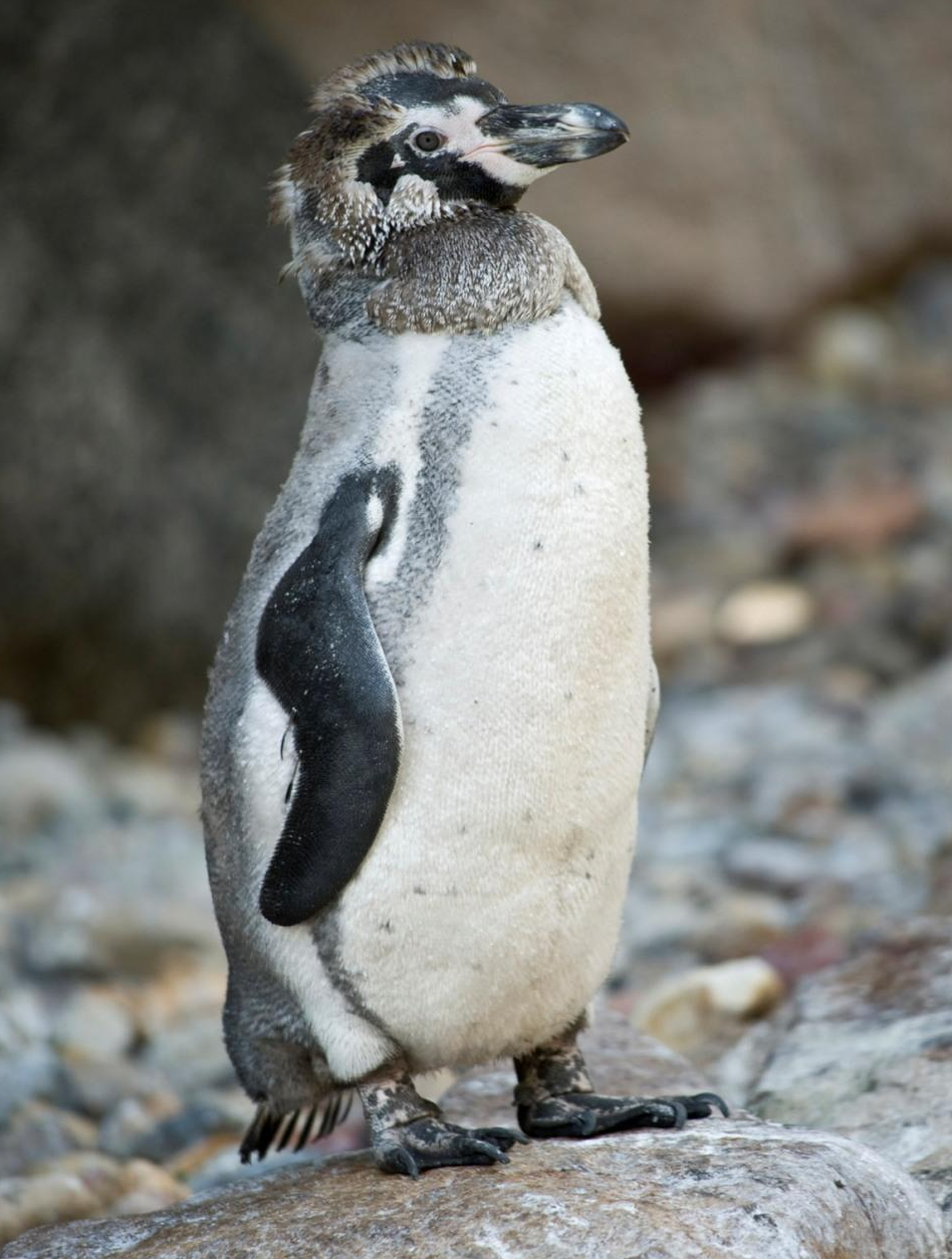
- Humboldt penguins (Spheniscus Humboldti) are a medium-sized species with an average height of just over 2 ft.
- They have large, bare skin patches around their eyes, an adaptation to help keep them cool.
- Their breeding season in the wild is either March-April or September-October depending on the location of the colony.
- They are one of the most popular zoo penguins due to their ability to withstand warmer climates.
- Habitat:
- Humboldt penguins are endemic to the Pacific coasts of Chile and Peru.
- They are so named because their habitat is located near the Humboldt Current, a large oceanic upwelling characterised by cold waters.
- Humboldt penguins are endemic to the Pacific coasts of Chile and Peru.
- Threats:
- Entanglement in fishing nets, loss of key breeding sites, harvesting of guano for use as fertiliser, and being hunted by introduced species such as cats and dogs.
- Protection Status:
La Palma Island: Spain
Why in News
Recently, the Cumbre Vieja volcano in La Palma, one of Spain's Canary Islands, erupted.
Key Points
- About:
- The Cumbre Vieja volcano erupted for the first time in 50 years. The last time hot molten lava erupted and spread was in 1971.
- La Palma is the most north-westerly island of the Canary Islands, Spain.
- It’s geography is a result of a volcanic formation and has an area of 708 square kilometres making it the fifth largest of the eight main Canary Islands.
- Its highest mountain is the Roque de los Muchachos, at 2,423 metres being second among the peaks of the Canaries only to the peaks of the Teide massif on Tenerife.
- The Canary Islands are a group of ocean island volcanoes located off the coast of western Africa that have been formed by volcanic activity since around 20 million years ago. It comprises the Spanish provinces of Las Palmas and Santa Cruz de Tenerife.
- Other Recently Erupted Volcanoes:
- Volcanoes in India:
- Barren Island, Andaman Islands (India's only active volcano)
- Narcondam, Andaman Islands
- Baratang, Andaman Islands
- Deccan Traps, Maharashtra
- Dhinodhar Hills, Gujarat
- Dhosi Hill, Haryana
Qutub Minar
Why in News
Recently, steep stairways and wooden ramps among other changes have been brought at the World Heritage Site of Qutub Minar that will make the place accessible for disabled and the elderly.
- Humayun’s Tomb (1993) and Red Fort Complex (2007) are other world heritage monuments in Delhi.
Key Points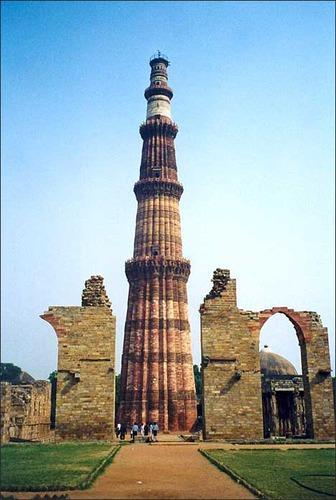
- It is a five-storeyed red sandstone tower (72.5 m high) built by Muslim conquerors in the thirteenth century to commemorate their final triumph over the Rajput rulers of Delhi (Qutub means victory), while also serving as a tower from where muezzins (criers) call for prayer at the Quwwatu’l-Islam mosque nearby.
- A 7 m-high iron pillar stands in the courtyard of the mosque.
- Its surrounding contains Alai-Darwaza Gate, the masterpiece of Indo-Muslim art (built in 1311).
- The building process of Qutub Minar took about 75 years. Its construction was started by Qutub-ud-din Aibak (1206-1210) in 1193 and finished by Iltutmish (1211-1236).
- In 1368, it was repaired by the rulers of the day, Muhammad-bin-Tughluq (1325-51) and Firuz Shah Tughluq (1351-88).
- The minar (tower) is engraved with fine arabesque decorations on its surface, mainly verses from the Quran.
- Qutub Minar and its monuments were declared a UNESCO World Heritage Site in 1993.

